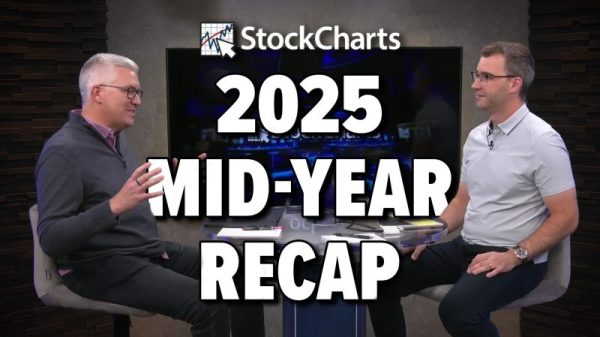I’ve spent much of my career helping investors become more like pilots. Why is this such an important mindset to adopt? Well, pilots have to maintain good situational awareness, understanding what is happening around them. They need to make difficult decisions and recognize when conditions are changing. And, perhaps most importantly, they have to fight the pull of their emotions, which could get them into serious trouble otherwise.
First solo flight, Norwood Airport (KOWD), July 7, 2012.
Author’s Note: Fun fact… I created a video celebrating my first solo flight, and I believe that was the very first video I ever uploaded to YouTube!
The rise of behavioral finance as a legitimate field of study has helped investors to identify and classify a series of cognitive and emotional biases. Today, we’ll share three that we find most commonly displayed by investors, from seasoned market professionals all the way down to novice traders. We’ll also share some technical analysis tools that could help you minimize their potentially negative impact on your portfolio!
I hope you can reflect on where you’ve seen these biases crop up in your own process, and identify some tools on StockCharts to help you minimize their disastrous impact on your returns!
Confirmation Bias
The most common bias in my experience is confirmation bias, where you gather evidence to confirm a decision that you’ve basically already made. Now what actually happens is that you often come across lots of evidence that could either support or detract from your investment thesis. Your brain assigns greater value to evidence that supports your thesis, and sort of mentally pushes away evidence that would refute your opinion.
Social media tends to exaggerate the effects of confirmation bias, because every time you “like” or “follow” a particular account with a specific approach or point of view, you are teaching the algorithm to give you more content with a similar voice and perspective. So basically you are teaching the social media platform to give you more of the same, over and over.
The right way to develop an investment thesis is to gather evidence, consider the weight of the evidence, and then make your decision. I call this an “evidence-based process” and it is at the core of how I use charts in my daily and weekly routines. In fact, my Morning Coffee Routine uses a set of charts to help me review conditions for the broad market averages, breadth and sentiment indicators, intermarket analysis, sector and thematic plays, and individual stocks.
The best way to fight confirmation bias is to have a rock-solid chart review process, and then to consistently and religiously search out alternate hypotheses and opposing points of view. Social media platforms don’t make that process particularly easy, but your portfolio will appreciate your efforts to consider various perspectives!
Narrative Bias
“The S&P 500 will go higher because the Fed will be lowering interest rates and semiconductor stocks will plow higher due to the AI craze.” If you’ve ever uttered a sentence like that, you’re most likely setting yourself up for what is called narrative bias.
We love stories, especially when we’re the main character. That’s why when you go to buy a car, the salesperson will try and get you behind the wheel for a test drive. Because at that point, you’re no longer thinking about the price tag, you’re enjoying the narrative of you as a brand new car owner.
Narratives come from an honest place, as they are really a way that we as humans make sense of the world around us. To be human is to tell stories, to engage with others and to better understand the human condition. But when you become too engrossed with a market narrative that you ignore when the evidence changes, that’s when it can become a costly mistake.
The S&P 500 made a new all-time high this week, and I’ve seen lots of commentary talking up optimism for stocks based on a combination of lower interest rates, a more dovish Fed, limited fallout from conflict in the Middle East, the dominance of mega-cap growth stocks, and a low-volatility environment. That may be the current situation for the markets in mid-January 2024. But conditions can, and most certainly will, change.
One of the great benefits of technical analysis is that it can provide clear levels and signals to help you define when a change in trend has occurred. For me, the S&P 500 chart is strong, as long as we hold 4700. A break below 4700 would open the door to a more long-term support level at the price gap, around 4550. As long as we remain above 4550, I would say this market is in a confirmed uptrend.
Now here’s the best part. I have set price alerts on StockCharts for when those downside thresholds are reached for the S&P 500 index. And the platform will e-mail me, text me, and pop up a banner on the website if and when those levels are reached. Want to minimize narrative bias? Have StockCharts tell you when the narrative is no longer in play!
Overconfidence
Social media (and the market in general!) is filled with overconfident traders and investors. It’s not hard to find examples of people taking virtual victory laps for their incredible track record or market calls.
I have yet to meet a successful investor who has not made huge mistakes in their career. I was once told that these early misses were the “tuition you paid to the market” as a downpayment for future successes.
Technical analysis tools can really help to upgrade your confidence in your abilities to pick stocks and ETFs, and that is a very good thing. But, especially when you have a run of good trades, it’s very easy to start thinking that you can do no wrong in your portfolio. As many successful traders will tell you, this is usually when the rug is yanked out from under your feet!
Investing is an incredibly humbling way to spend your time. I have been right plenty of times, and I have been wrong more times that I could count. That’s why my trading journal has three lines for every trade:
What’s the position I’m taking?Why am I taking that position?What would tell me that I was wrong?
That third line, by the way, is how I try to avoid overconfidence. Every time I take a position, I’m admitting that there is a very real chance that I’m going to be wrong. Most importantly, I lay out exactly what I’d need to see to confirm that very thing.
These are just three of the literally hundreds of behavioral biases that I’ve observed over my career. You may find that one or two of the ones I’ve described today resonates with you, and you’ve probably experienced them all at times. The good news is that a consistent process using charts and technical analysis tools can provide a more objective view of the weight of the evidence and help you to make better (and more mindful!) investment decisions.
By the way, I’m super excited for new all-time highs on the S&P 500, but I’m also skeptical of further upside, based on a review of five market breadth indicators. Check out my latest YouTube video for more on the divergence between price and breadth for the S&P 500!
RR#6,
Dave
P.S. Ready to upgrade your investment process? Check out my free behavioral investing course!
David Keller, CMT
Chief Market Strategist
StockCharts.com
Disclaimer: This blog is for educational purposes only and should not be construed as financial advice. The ideas and strategies should never be used without first assessing your own personal and financial situation, or without consulting a financial professional.
The author does not have a position in mentioned securities at the time of publication. Any opinions expressed herein are solely those of the author and do not in any way represent the views or opinions of any other person or entity.



























